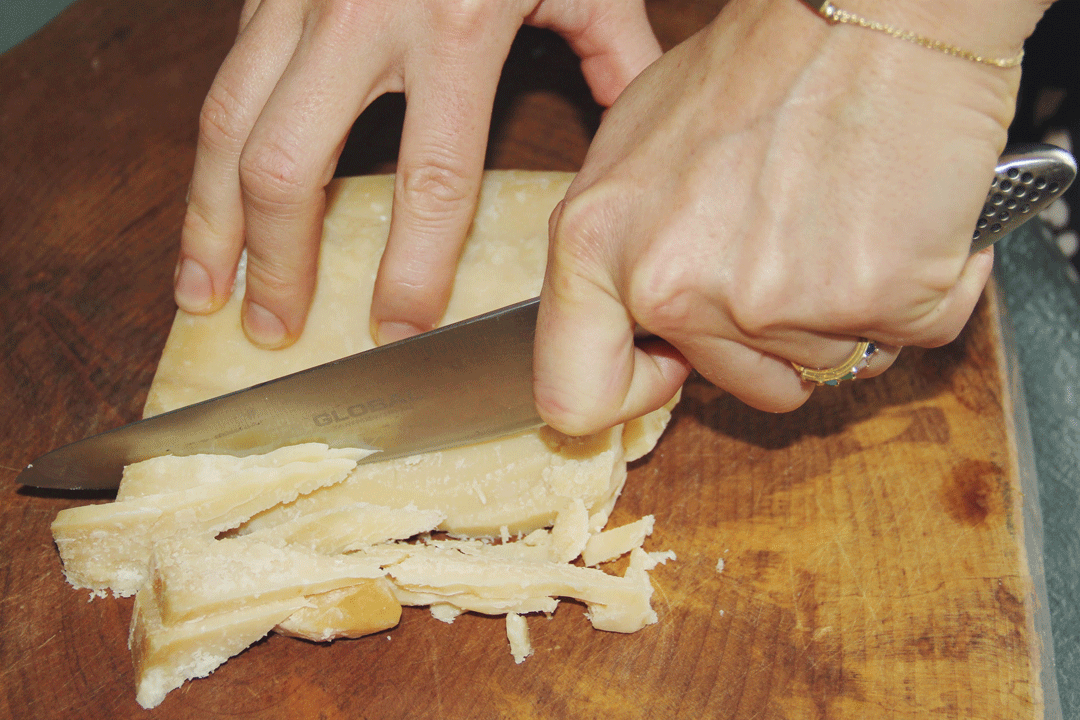
By: Sarah Pachelli
Whole Foods may be the name of a popular grocery store chain, but take away the capital letters, and it’s also the best approach to eating. Meaning: eat whole foods and not processed foods; eat whole foods and not derivatives of foods; eat whole foods and not chemicals. Following this simple principle, it makes absolute sense that the only dairy to eat is full-fat dairy. Thanks for reading. Goodbye. I kid…
Fat occurs naturally in dairy — and thank the goddesses for it! The fat slows down the body’s assimilation of the sugars also found in dairy. These sugars, called lactose, are what many people are allergic to. If you’re lactose intolerant, there’s a very good chance you grew up consuming low-or no-fat dairy products. (Caveat being, yes, some people, even when they eat full-fat dairy are sensitive to it. That’s fine. Learn what your body can digest and honor that.) If this resonates with you, try switching to full-fat dairy products. You will find them more satisfying and, often, you will need less to feel full. The low-and no-fat dairy products leave us wanting more; thus, we overeat to compensate for not having enough fat.
Let’s also remember this: fat doesn’t make us fat; (too much) sugar makes us gain weight. That’s a double whammy, indeed. Not only are we eating more dairy when the fat is removed, we’re also getting more sugar! In an attempt to be healthy and fit, we’re doing the opposite. Many of us grew up in an age where fat was the primo villain. It’s time to remove that stigma and embrace foods as nature intended. Scan the dairy aisle at your local grocery store. You’ll see low-and fat-free yogurts, milks, cottage cheeses, et cetera are more ubiquitous than their full-fat counterparts. Why? Sugar keeps us coming back for more.
If eating full-fat dairy feels like a big ask, start slowly. If you bow to the altar of fat-free, shift to low-fat for a few weeks and see how your body manages. Once accustomed, move to full fat.
Some useful ways to ease this transition:
- Buy full-fat, plain yogurt and add fresh fruit, honey, and cinnamon. Most pre-flavored yogurts have tons of added sugar to make them palatable (here in the States we’re not as accustomed to that delicious tangy flavor). It’s far healthier and tastier to make your own concoction with the best seasonal fruit than to buy a syrupy substitute.
- Add full-fat milk to your morning coffee. If you’re someone who loves half-n-half, you might find the same level of satiation with full-fat dairy. You may also notice you need less milk to make your coffee yummy. (Side note: if you add a lot of sugar to your morning brew, maybe it’s time to ask yourself if you like the taste of coffee or if you’re addicted to having a dessert in the morning. No judgment, just observation.)
- Eat gelato instead of ice cream. The reason why the Italians do it better — among many reasons — is because they know that fat tastes great. Gelato has a much higher fat content. This is why you only need a piccola coppeta of gelato to have your sweet tooth sated, as opposed to the big-ass bowls we’re used to eating in the States.
- Use full-fat cheeses. This includes cottage, ricotta, and easy bags of shredded bits. Not only is the taste much better, but the consistency lends itself better to baking.
- Embrace butter. We’ll just leave that one right there!
Here’s the bottom line: dairy is a pleasure. It’s not necessary. The milk industry had us convinced that we must drink gallons for calcium, but that’s a misnomer. Milk contains calcium, it’s true, and calcium is excellent for our bones, of course. However, if you want to increase your bone health, it’s far better to up your Vitamin K intake than your calcium. Vitamin K is the essential nutrient that works with calcium to build strong bones. In other words: Vitamin K is what feeds the calcium naturally occurring in your body. Thus, when we eat more foods with Vitamin K (or take a responsible Vitamin K supplement), we help our body produce the calcium it needs to thrive.
Some staple food items with Vitamin K:
- Kale
- Spinach
- Collard greens
- Swiss chard
- Parsley
- Romaine
- Broccoli
- Eggs
- Prunes
In health,
Sarah x